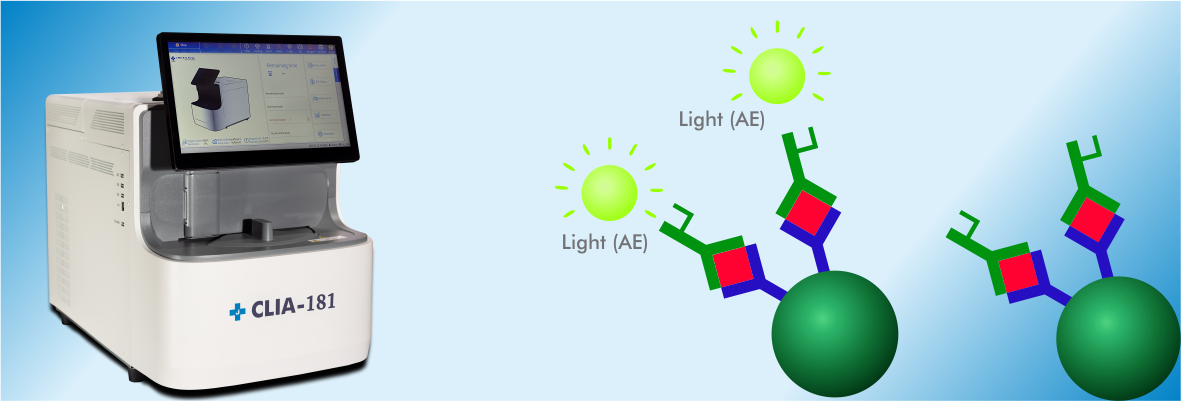Chemiluminescent Immunoassay (CLIA)
Chemiluminescent Immunoassay (CLIA) is a method that utilizes a luminescent molecule as a signal of the analysis reaction. Luminescence is the release of visible or near-visible light when an electron moves from an excited state to the ground state, releasing energy in the form of light. Compared to absorbance, luminescence has the advantage of being an absolute measurement.
Chemiluminescent methods either use luminophore markers such as acridinium and ruthenium esters or enzyme markers; Alkaline phosphatase with adamantyl 1, 2-dioxetane aryl phosphate (AMPPD) substrate and Horseradish peroxidase with luminol or its derivatives as substrate. Acridinium ester-based CLIA is the advanced method with enhanced sensitivity.
CLIA and ELISA are techniques for identifying and measuring specific proteins or antibodies in a sample. While both have advantages, there are differences between CLIA and ELISA that may make one method more suitable for a particular application. CLIA has higher sensitivity, a more comprehensive range of detection, a lower limit for detecting low-abundant proteins or early-stage disease, improved specificity, automation for high-throughput processing, and a lower cost for large-scale testing. These benefits make CLIA a practical choice for high-throughput applications. The future of CLIA testing looks promising as CLIA technology continues to evolve and improve. The development of new reagents and improved instrumentation has led to more sensitive and specific assays, which can detect lower levels of analytes in a sample.
CLIA testing is evolving towards automation and high throughput, leading to faster and more efficient testing that is cost-effective and widely available. The growing use of CLIA testing in point-of-care settings is expected to enhance patient outcomes by delivering quicker and more precise test results.CLIA testing is also becoming more accessible to detect various diseases such as cancer, autoimmune disorders, and infectious diseases; this will help in the early detection and better management of the diseases.
Overall, the future of CLIA testing looks promising, and it is expected to become an increasingly important tool in diagnosing and managing a wide range of medical conditions. However, it is essential to note that the CLIA testing market is constantly evolving, and it is always worth keeping an eye on the latest developments and trends in the diagnostic field.

